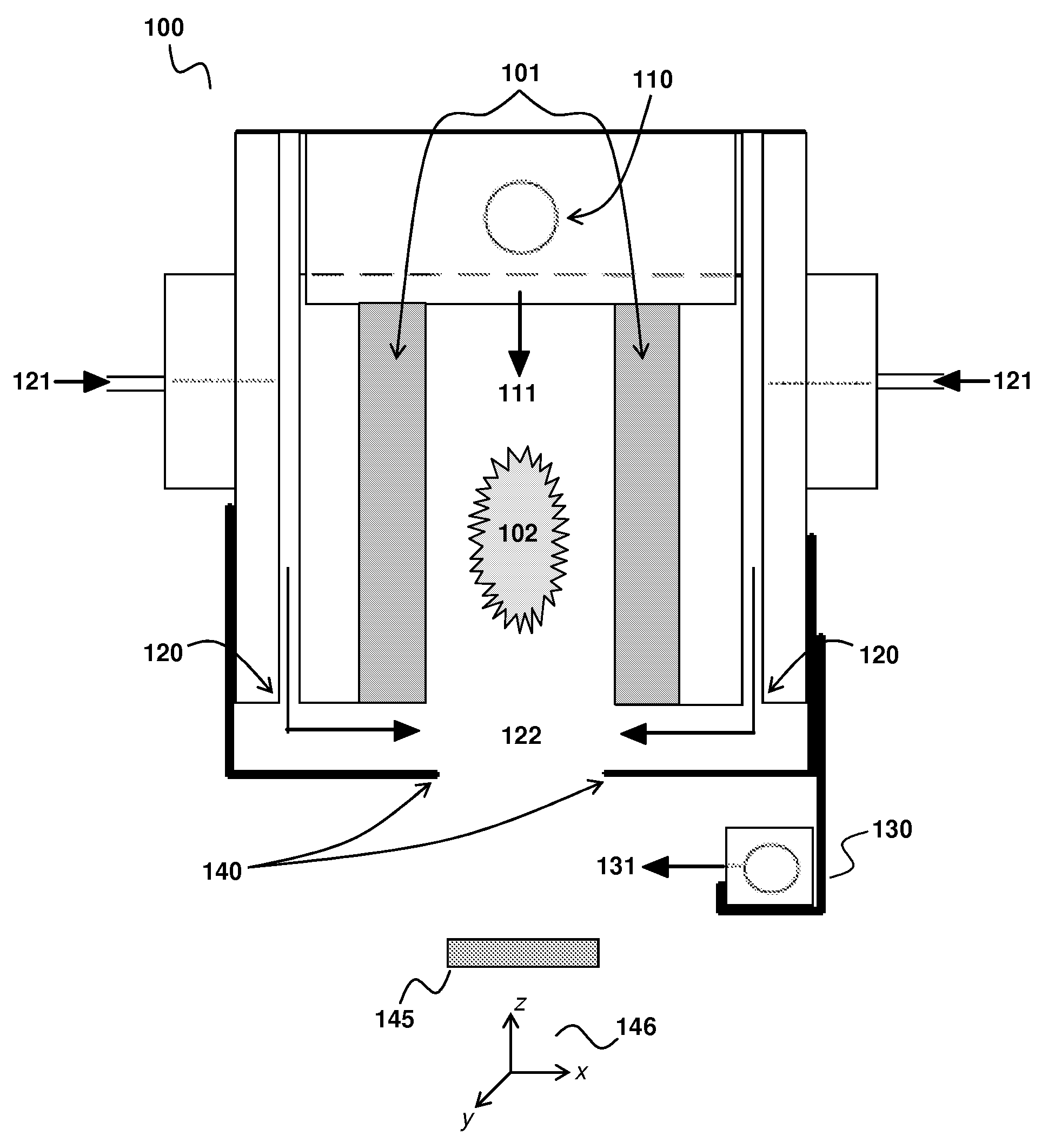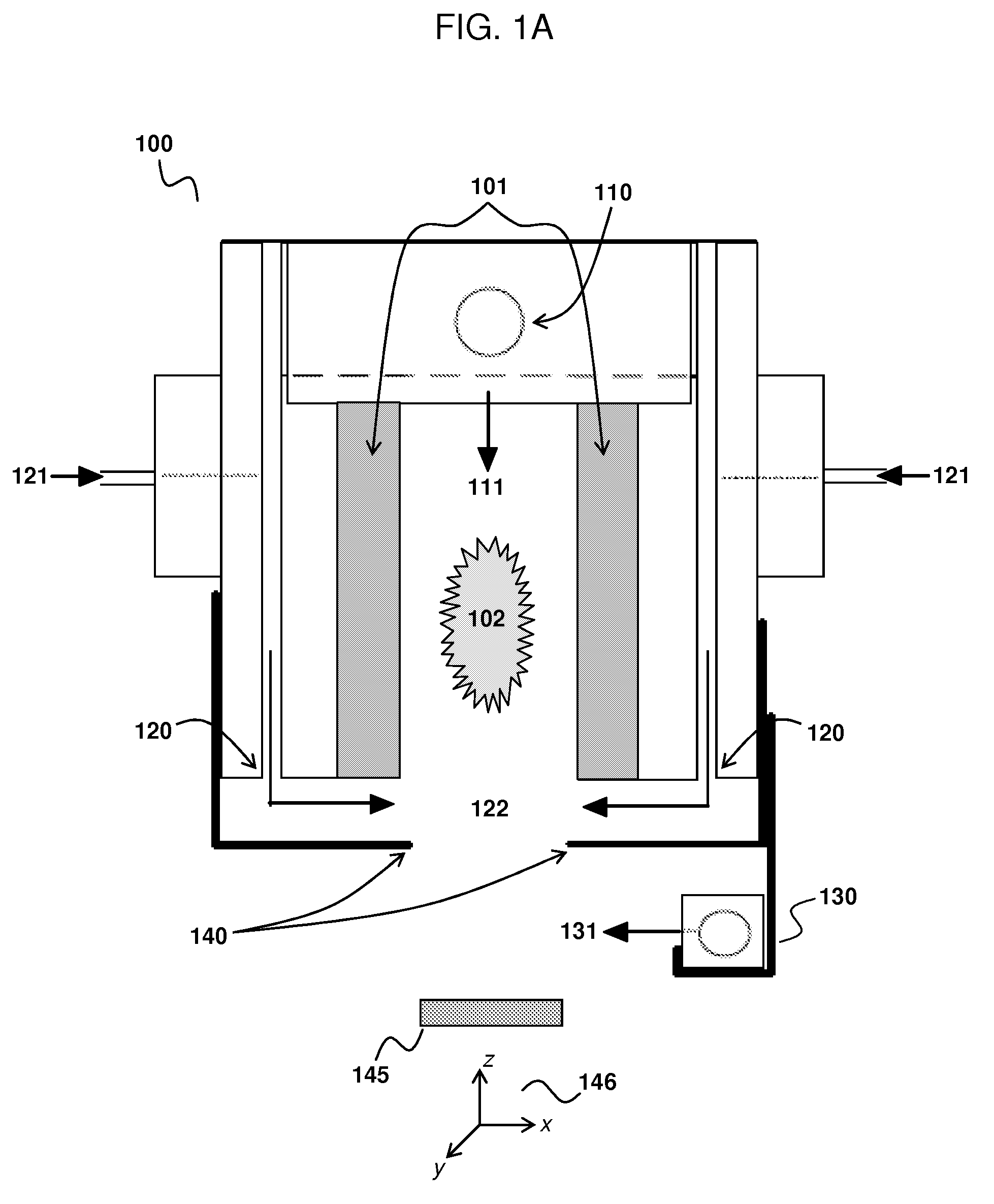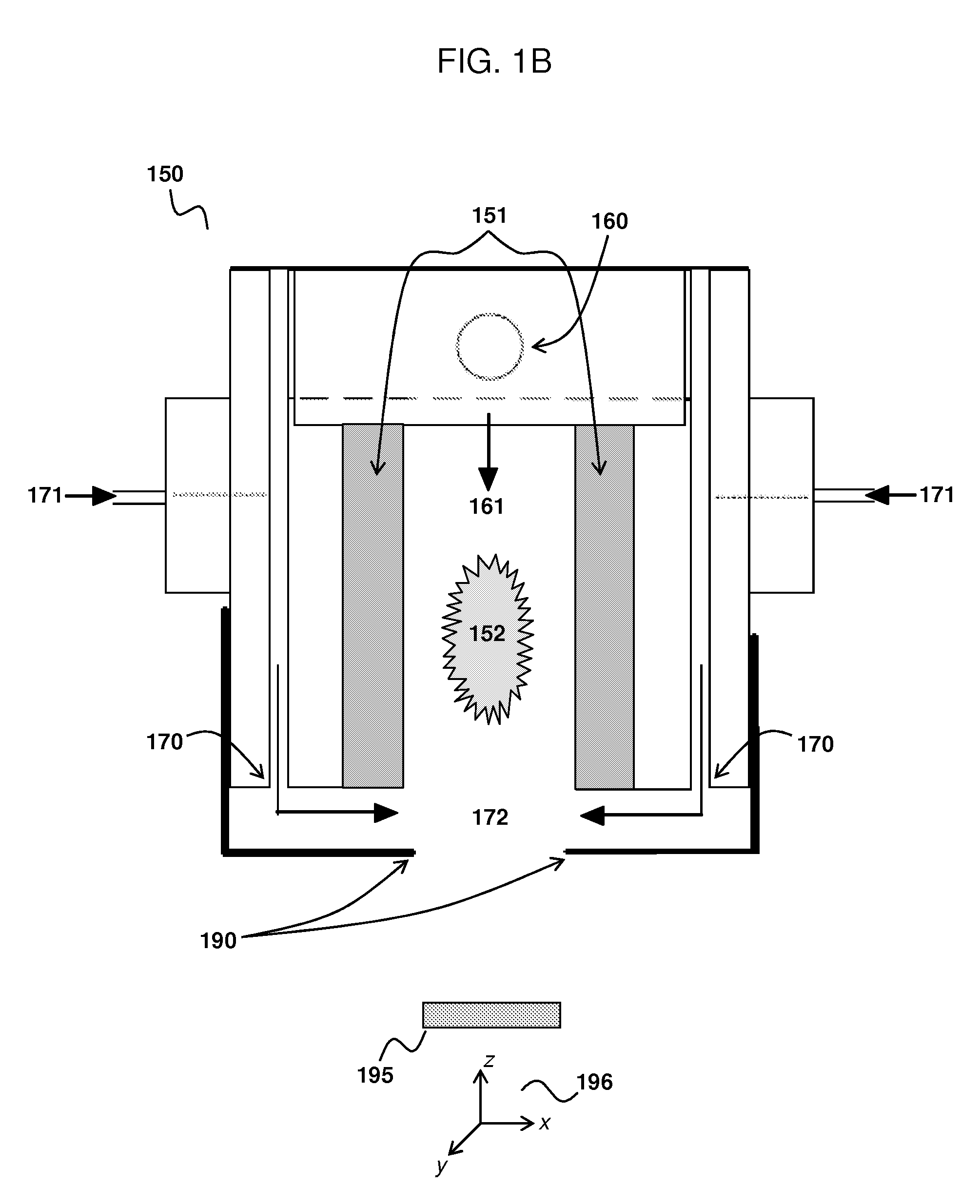Method for Fabricating a Doped and/or Alloyed Semiconductor
a technology of alloyed semiconductors and semiconductor layers, which is applied in the direction of electrolysis components, vacuum evaporation coatings, coatings, etc., can solve the problems of low deposition rate of film preparation process, poor process reproducibility, and reduced optical transmission of materials, so as to achieve and facilitate the optimization of dopant concentration. , the effect of maintaining the desired structural, optical and electrical properties
- Summary
- Abstract
- Description
- Claims
- Application Information
AI Technical Summary
Benefits of technology
Problems solved by technology
Method used
Image
Examples
example 1
[0143]Zinc oxide (ZnO) and gallium-doped zinc oxide (GZO) films were deposited on glass substrates by a method of the present invention using an apparatus depicted in FIGS. 1-3. A zinc sputtering target was utilized for all depositions. An argon plasma was generated in the hollow cathode portion of the apparatus (the length of the cathode was about 15 cm), and an oxidant (O2) was introduced into the deposition chamber. Sputtered zinc was carried to the substrate and mixed with the oxidant by the argon flow. For the GZO films the metalorganic was triethylgallium (TEGa), which was introduced in the deposition chamber using argon as a carrier gas. The metalorganic TEGa was dissociated by the argon plasma and carried onto the substrate where it was co-deposited with the zinc oxide. The deposition conditions are outlined in the Tables below.
TABLESDeposition conditions and flow rates for undoped ZnO and GZO layers(deposited using a hollow cathode assemblyhaving a length of about 15 cm) . ...
example 2
[0145]The composition of the ZnO film and GZO films prepared in Example 1 was characterized using inductively coupled plasma optical emission spectrometry (ICP-OES). The results are presented in the Table below.
TABLEICP measurements of ZnO and GZO films.GaGa(403.298)(417.206)Zn (202.551)Zn (206.200)Sampleppmppmppmppm% GaStandard10.0010.0010.0010.00—Blank0.000.000.000.00—598−0.050.063187.31190.92 0%59921.5423.73583.07675.553.27%5976.176.09159.88157.023.63%594b30.7829.17327.17390.987.84%
[0146]Referring to the above Table, gallium concentrations of about 3.3% to about 7.8% were obtained. The gallium concentration of the GZO films can be correlated with the flow rate of argon and TEGa into the deposition chamber, as well as the TEGa bubbler temperature and pressure.
example 3
[0147]The compositional uniformity of the ZnO film and GZO films prepared in Example 1 was characterized using dynamic Secondary Ion Mass Spectrometry (d-SIMS). The depth profiles obtained from the d-SIMS analysis are presented graphically in FIGS. 4A-4B, 5A-5B and 6A-6B.
[0148]The depth profile for the undoped ZnO layer is provided in FIGS. 4A-4B. Referring to FIG. 4A, the depth profile for zinc, sodium and gallium in the ZnO layer indicates that the ZnO layer is free from gallium (i.e., gallium is below the detection limit), and substantially uniform with respect to the concentration of zinc. The sodium signature arises from the underlying glass substrate.
[0149]Referring to FIG. 4B, the depth profile for zinc+oxygen, fluorine, chlorine, hydrogen and carbon in the ZnO layer indicates that the ZnO film is substantially uniform with respect to zinc+oxygen, and substantially free of carbon. The ZnO film contains very low levels of the halides (i.e., F and Cl) and hydrogen.
[0150]The dep...
PUM
| Property | Measurement | Unit |
|---|---|---|
| refractive index | aaaaa | aaaaa |
| distance | aaaaa | aaaaa |
| temperature | aaaaa | aaaaa |
Abstract
Description
Claims
Application Information
 Login to View More
Login to View More - R&D
- Intellectual Property
- Life Sciences
- Materials
- Tech Scout
- Unparalleled Data Quality
- Higher Quality Content
- 60% Fewer Hallucinations
Browse by: Latest US Patents, China's latest patents, Technical Efficacy Thesaurus, Application Domain, Technology Topic, Popular Technical Reports.
© 2025 PatSnap. All rights reserved.Legal|Privacy policy|Modern Slavery Act Transparency Statement|Sitemap|About US| Contact US: help@patsnap.com



